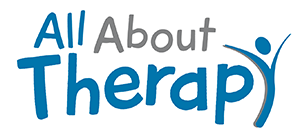Improving Grasping and Handwriting/Pre-Handwritng Skills at Home
A pincer grasp is very important, it’s what we use to pick up small objects, tie our shoelaces, and feed ourselves finger food. A pincer grasp involves using the pad of your thumb and pad of your index finger to pick up objects. Children typically develop a pincer grasp between 8-12 months of age. If your child is having difficulty developing a pincer grasp here are two activities to try at home:
- Sock glove: Cut two small holes in an old sock so that your child can put their thumb and index finger through the holes. Place the sock on your child’s hand. Have them attempt to pick up small items using a pincer grasp. Some items could include finger foods (Cheerios!), cotton balls, pennies, etc.
- Lacing cards: lacing cards improve hand eye coordination and are also great for developing a pincer grasp. Lacing cards can be made out of anything! Cut out simple shapes (a star, triangle, square) or a drawing your child has made on recycled cardboard or cardstock. Use a hole punch to punch holes around the shape. Have your child help if they are able to (using scissors and a hole punch helps strengthen hands and requires hand eye coordination!) Use an old shoelace as the thread with your child using a pincer grasp to hold the shoelace.
If your child is between 3 and 3 and a half years old, they should begin holding a writing utensil similarly to how adults do. This means either with their thumb and pad of their index finger with the other three fingers secure against their palm, or with their thumb, pad of their index finger, and pad of their middle finger with the other two fingers secure against their palm. This is the beginning of a tripod grasp. If your child is having difficulty using this grasping pattern, try having them do these activities at home:
- Shaving cream is a fun sensory activity that can also improve visual motor and grasping skills. Have your child use a Q-tip broken in half to write lines, shapes, or letters (depending on their skill level) in the shaving cream (on a table top surface or on a piece of construction paper). Assist them to hold the Q-tip with the pad of their thumb, index and middle fingers.
- Don’t throw out those broken crayons just yet! Crayons that are broken in half (or smaller!) can be used for drawing to help facilitate using the pad of the thumb, index, and middle finger on a writing utensil. Bonus: tape a piece of paper to a vertical writing surface like a chalkboard, window or wall to help facilitate the correct position of the wrist.
- Clothespins are a great everyday household object with many OT uses! They can help develop skilled control of the thumb, index, and middle fingers, which is needed for handwriting. They can also be used for hand strengthening if your child has a weak grasp. There are many fun games to play with clothespins! You and your child can decorate them, hang things with them, or use them to pick up objects. Here’s one game to get you started: Can you show me how fast can you pick up all the cotton balls with a clothes pin and place them into the cup?


